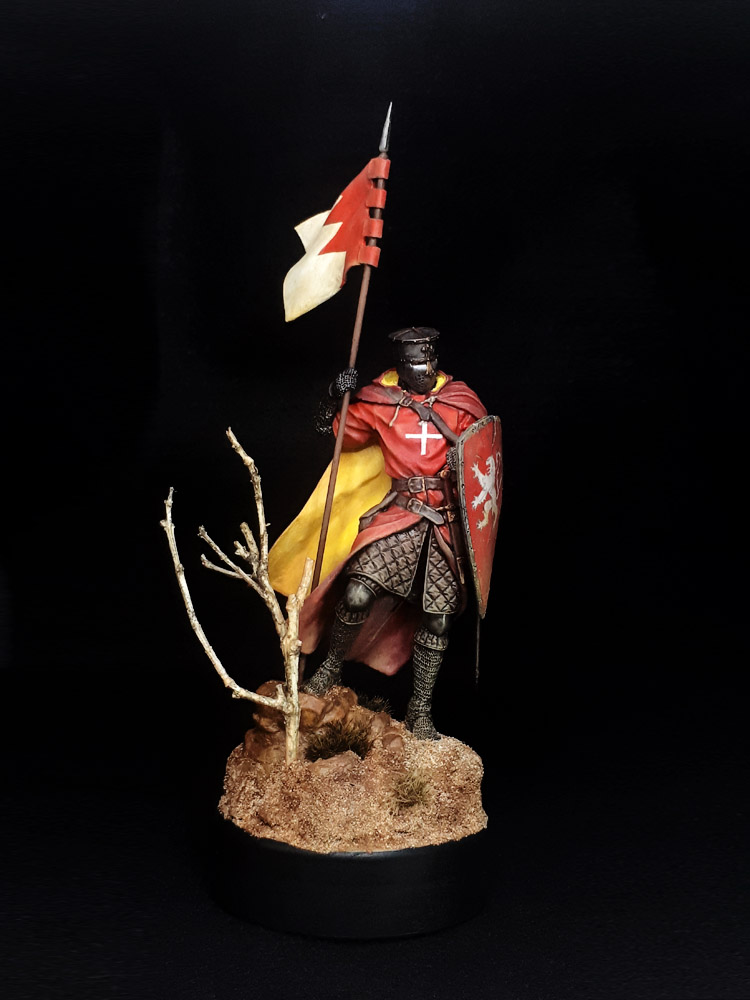
Simon de Montfort ‘The Elder’ – Knight and 5th Earl of Leicester, was born in 1175, a French nobleman and famous knight in the early 13th century. Regarded as one of the great military commanders of the medieval era, he took part in the Fourth Crusade (1202-1204) and was a major figure early on in the Albigensian Crusade (1209-1229).
Montfort is mostly noted for his campaigns in the latter. He died at the Siege of Toulouse in 1218 when his head was smashed by a stone from a mangonel (catapult).
In 1199, while taking part in a tournament at Ecry-sur-Aisne, he ‘took the cross’ and went on the Fourth Crusade. The crusade was financed by the Venetians who supplied ships for transport, and when the crusaders were unable to fully pay the debt the Venetians took control and the fleet was diverted to Zara on the Adriatic Sea, a former Venetian city which was attacked and sacked in 1202 even though it was a ‘christian’ city! Because many Frankish lords were in debt to the Venetians, they did support the attack.
Pope Innocent III had specifically warned the Crusaders not to attack fellow Christians! Simon de Montfort opposed the attack and did not participate in this action and was one of its most outspoken critics. He left the crusade when the decision was taken to divert once more to Constantinople to place Alexius IV Angelus on the throne. Instead, Simon and his followers travelled to the court of King Emeric of Hungary and then on to Acre in the Holy Land.
Upon returning from the 4th crusade, Simon remained on his estates in France before ‘taking the cross’ once more, this time against Christian heresy. He participated in the initial campaign of the Albigensian or Cathar Crusade in 1209. A 20-year military campaign initiated by Pope Innocent III to eliminate Catharism in southern France, which was an anti-materialist reform movement within the church calling for what they saw as a return to the Christian message of perfection, poverty and preaching, combined with a rejection of the physical to the point of starvation.
The reforms were a reaction against the often perceived scandalous and dissolute lifestyles of the Catholic clergy in southern France. The Crusade was prosecuted primarily by the French crown and promptly took on a political aspect, resulting in not only a significant reduction in the number of practising Cathars, but also a realignment of the County of Toulouse in Languedoc, bringing it into the sphere of the French crown, and after the fall of Carcassonne, Simon was elected leader of the crusade and viscount of the confiscated territories of the Raymond-Roger Trencavel family.
Simon is described as a man of unflinching religious orthodoxy, was an energetic campaigner, rapidly moving his forces to strike at those who had broken their faith with him – and there were many, as some local lords switched sides whenever the moment seemed advantageous. Simon showed ruthlessness and daring as well as being particularly brutal with those who betrayed their pledges.
At age 43 Simon was killed in 1218 at Toulouse while combating a sorty from the the besieged city. His head was smashed by a stone from a mangonel, one source noting it was operated by the “ladies and girls and women” of Toulouse.
